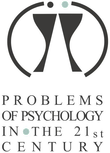THE ATHLETES’ BODY SHAPES THE ATHLETES’ MIND – NEW PERSPECTIVES ON MENTAL ROTATION PERFORMANCE IN ATHLETES
| Title | THE ATHLETES’ BODY SHAPES THE ATHLETES’ MIND – NEW PERSPECTIVES ON MENTAL ROTATION PERFORMANCE IN ATHLETES |
| Publication Type | Journal Article |
| Year of Publication | 2013 |
| Authors | Heinen, T, Jeraj, D |
| Journal | Problems of Psychology in the 21st Century |
| Volume | 7 |
| Start Page | 23-31 |
| Date Published | December/2013 |
| Type of Article | Original article |
| ISSN | 2029-8587 |
| Other Numbers | ICID: 1081461 |
| Keywords | functional equivalence hypothesis, rotation preference, sensory-motor experience |
| Abstract | Mentally rotating the image of an object is one fundamental cognitive ability in humans. Recent theoretical developments and empirical evidences highlight the potential role of the sensory-motor system, when analysing and understanding mental rotation. Therefore, the purpose of this study was to investigate the role of specific sensory-motor experience on mental rotation performance in gymnasts. N = 40 male gymnasts with either clockwise or anticlockwise rotation preference in a forward twisting layout salto performed a psychometric mental rotation test with either rotation-preference congruent or rotation-preference incongruent stimuli. Results revealed that choice reaction times differed clearly as a function of Angular Rotation between the stimuli figures. Gymnasts who preferred a clockwise rotation preference showed faster choice reaction times when the rotation direction of the reference figure was clockwise, and vice versa. The results clearly support the notion, that mental rotation performance varies as a function of sensory-motor system characteristics between different people. It is concluded, that sensory-motor experience in a particular sport may facilitate cognitive processing of experience-congruent stimuli. This may be advantageous for situations in which people are engaged in observing sport performance (i.e., judges, coaches). This conclusion could furthermore contribute to the training of athletes from sports such as sky-diving, scuba-diving, and climbing, where losses of spatial orientation can be life-threatening. |
| URL | http://oaji.net/articles/2014/444-1400504090.pdf |
| DOI | 10.33225/ppc/13.07.23 |
| Refereed Designation | Refereed |
| Full Text |
